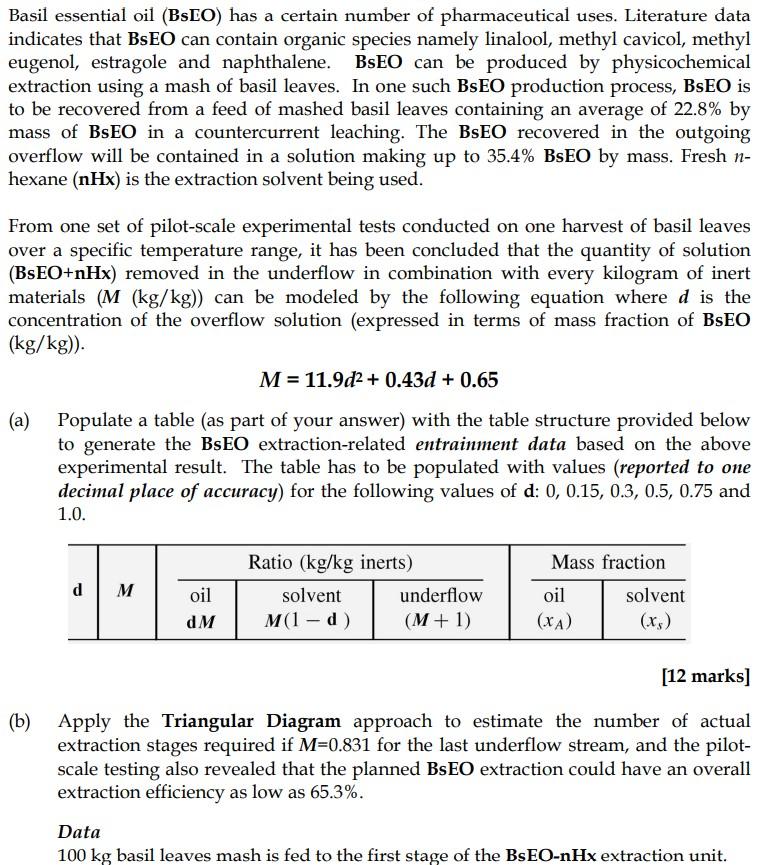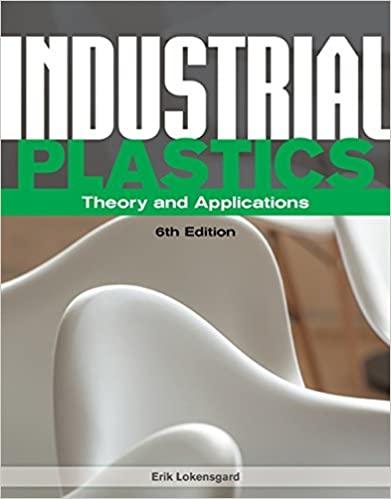
Basil essential oil (BsEO) has a certain number of pharmaceutical uses. Literature data indicates that BsEO can contain organic species namely linalool, methyl cavicol, methyl eugenol, estragole and naphthalene. BsEO can be produced by physicochemical extraction using a mash of basil leaves. In one such BsEO production process, BsEO is to be recovered from a feed of mashed basil leaves containing an average of 22.8% by mass of BsEO in a countercurrent leaching. The BsEO recovered in the outgoing overflow will be contained in a solution making up to 35.4% BsEO by mass. Fresh n hexane (nHx) is the extraction solvent being used. From one set of pilot-scale experimental tests conducted on one harvest of basil leaves over a specific temperature range, it has been concluded that the quantity of solution (BsEO+nHx) removed in the underflow in combination with every kilogram of inert materials (M(kg/kg)) can be modeled by the following equation where d is the concentration of the overflow solution (expressed in terms of mass fraction of BsEO (kg/kg)) M=11.9d2+0.43d+0.65 (a) Populate a table (as part of your answer) with the table structure provided below to generate the BsEO extraction-related entrainment data based on the above experimental result. The table has to be populated with values (reported to one decimal place of accuracy) for the following values of d: 0,0.15,0.3,0.5,0.75 and 1.0. [12 marks] (b) Apply the Triangular Diagram approach to estimate the number of actual extraction stages required if M=0.831 for the last underflow stream, and the pilotscale testing also revealed that the planned BsEO extraction could have an overall extraction efficiency as low as 65.3%. Data 100kg basil leaves mash is fed to the first stage of the BsEO-nHx extraction unit. Basil essential oil (BsEO) has a certain number of pharmaceutical uses. Literature data indicates that BsEO can contain organic species namely linalool, methyl cavicol, methyl eugenol, estragole and naphthalene. BsEO can be produced by physicochemical extraction using a mash of basil leaves. In one such BsEO production process, BsEO is to be recovered from a feed of mashed basil leaves containing an average of 22.8% by mass of BsEO in a countercurrent leaching. The BsEO recovered in the outgoing overflow will be contained in a solution making up to 35.4% BsEO by mass. Fresh n hexane (nHx) is the extraction solvent being used. From one set of pilot-scale experimental tests conducted on one harvest of basil leaves over a specific temperature range, it has been concluded that the quantity of solution (BsEO+nHx) removed in the underflow in combination with every kilogram of inert materials (M(kg/kg)) can be modeled by the following equation where d is the concentration of the overflow solution (expressed in terms of mass fraction of BsEO (kg/kg)) M=11.9d2+0.43d+0.65 (a) Populate a table (as part of your answer) with the table structure provided below to generate the BsEO extraction-related entrainment data based on the above experimental result. The table has to be populated with values (reported to one decimal place of accuracy) for the following values of d: 0,0.15,0.3,0.5,0.75 and 1.0. [12 marks] (b) Apply the Triangular Diagram approach to estimate the number of actual extraction stages required if M=0.831 for the last underflow stream, and the pilotscale testing also revealed that the planned BsEO extraction could have an overall extraction efficiency as low as 65.3%. Data 100kg basil leaves mash is fed to the first stage of the BsEO-nHx extraction unit







